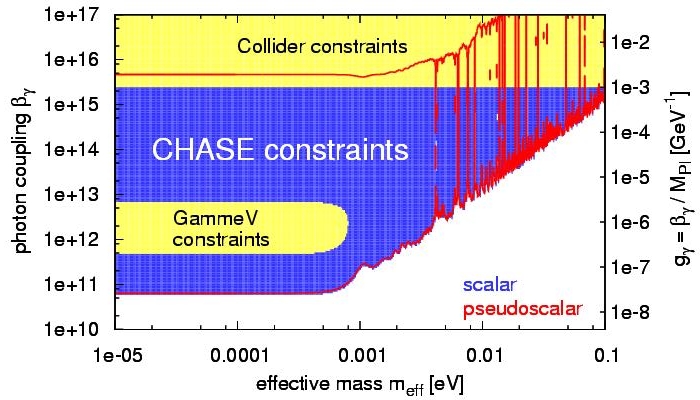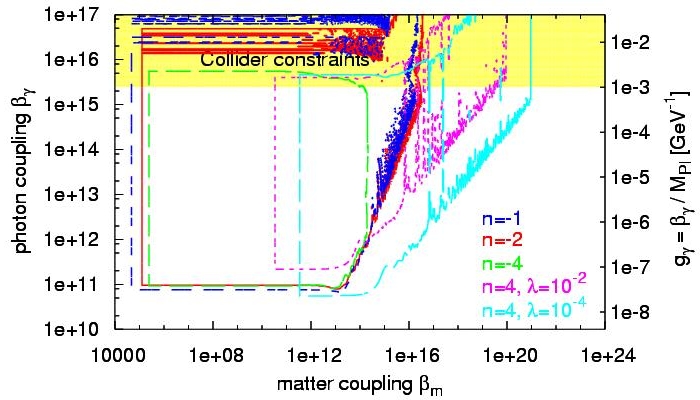Return to home page


The Chameleon Afterglow Search (CHASE) experiment is a second-generation experiment to search for chameleon particles. Chameleons are one of only a few viable candidates for scalar field "dark energy". Results from CHASE improve upon the GammeV search by extending the region of sensitivity by two orders of magnitude in chameleon effective mass, increasing sensitivity to photon couplings to nearly five orders of magnitude, and being sensitive to a broad class of dark energy and power-law chameleon models. For the simplest chameleon dark energy models, CHASE is sensitive to a previously unexplored region that is nearly five orders of magnitude in photon coupling and twelve orders of magnitude in matter coupling. These results are found in Physical Review Letters (105, 1803 (2010)) and are available on the arXiv. This experiment was featured on NPR's "Clever Apes" program.
Schematic of the CHASE apparatus. A 3.5 Watt laser is shone through the bore of a Tevatron dipole magnet. The expected afterglow from chameleon reconversion to photons is seen in the PMT on the left.

CHASE constraints (95% confidence) on chameleon/photon couplings vs. chameleon effective mass. Scalar (solid) and pseudoscalar (outline) are shown along with previous constraints from collider experiments and the original GammeV experiment.

Range of chameleon models probed by the CHASE experiment (blue) as parameterized by the quantity eta. The original GammeV experiment was sensitive to chameleon models in the yellow area. Typically, the chamelen effective mass (see previous graphic) is proportional to the matter density to the eta power.

CHASE constraints (95% confidence) on chameleon/photon and chameleon/matter couplings for a variety of individual chameleon models. Negative "n" correspond to dark energy models while positive "n" are for power-law models.

Return to home page





